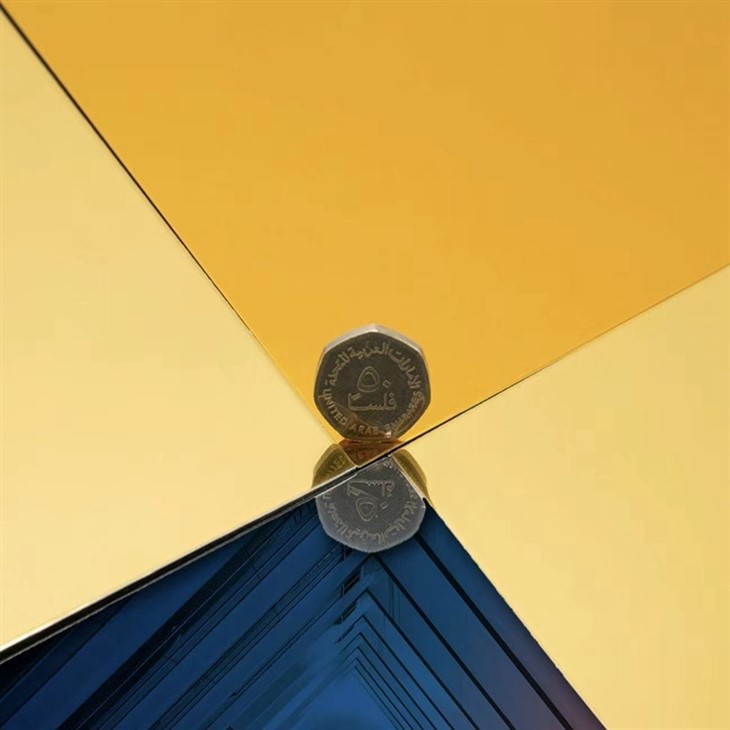As a supplier of unbroken core ACP, I am frequently asked about the installation techniques for curved unbroken core ACP. This blog aims to provide a comprehensive guide on this topic, offering valuable insights and practical advice for a successful installation.
Understanding Curved Unbroken Core ACP
Before delving into the installation techniques, it's essential to understand what curved unbroken core ACP is. Unbroken core ACP consists of two aluminum sheets bonded to a non - combustible or low - combustible core. The "unbroken core" feature provides enhanced strength and durability. When shaped into a curve, it can add a unique and modern aesthetic to architectural projects, such as building facades, interior partitions, and display stands.
Preparation Before Installation
1. Site Inspection
Conduct a thorough site inspection to ensure that the installation surface is clean, flat, and structurally sound. Any irregularities in the surface can lead to improper fitting of the ACP and affect the overall appearance. Measure the area accurately to determine the amount of ACP required. Also, check for any obstacles or existing structures that may interfere with the installation process.
2. Material Selection
Choose the appropriate unbroken core ACP based on the project requirements. Consider factors such as thickness, finish, and color. For curved applications, a thinner ACP may be more flexible and easier to bend. We offer a wide range of products, including the Hot Sale Free Sample PE/PVDF Alucobond/Aluminum Composite Panel/ACP Made In China, which comes in various finishes and can be used for curved installations.
3. Tools and Equipment
Gather all the necessary tools and equipment, such as a bending machine, saw, drill, rivet gun, measuring tape, and safety gear. The bending machine should be capable of bending the ACP to the desired radius without causing any damage to the material. Make sure all tools are in good working condition before starting the installation.
Bending the ACP
1. Calculating the Bend Radius
Determine the minimum bend radius for the unbroken core ACP. This is typically specified by the manufacturer and depends on the thickness of the panel. A smaller bend radius may require more advanced bending techniques and may increase the risk of cracking or delamination. Use a bending template or a CAD model to accurately calculate the bend radius.


2. Bending Process
There are several methods for bending ACP, including cold bending and hot bending. Cold bending is suitable for smaller bend radii and thinner panels. It involves using a bending machine to gradually shape the panel to the desired curve. Hot bending, on the other hand, is used for larger bend radii and thicker panels. It requires heating the panel to a specific temperature to make it more malleable. However, hot bending should be done with caution as overheating can damage the panel.
Installation of Curved ACP
1. Mounting the Support Structure
Install a suitable support structure that can withstand the weight and stress of the curved ACP. The support structure can be made of steel, aluminum, or other materials. Ensure that the support structure is properly aligned and leveled. The spacing between the support members should be determined based on the size and weight of the ACP panels.
2. Fixing the ACP to the Support Structure
There are different ways to fix the curved ACP to the support structure, such as using rivets, screws, or adhesive. Riveting is a common method as it provides a strong and durable connection. Drill holes in the ACP and the support structure at the appropriate locations and insert the rivets. Make sure the rivets are evenly spaced and tightened properly. When using screws, use self - tapping screws that are suitable for aluminum. Adhesive can be used for a more seamless look, but it requires careful surface preparation and proper curing time.
3. Sealing the Joints
Seal the joints between the ACP panels to prevent water penetration and improve the overall appearance. Use a high - quality sealant that is compatible with the ACP material. Apply the sealant evenly along the joints and smooth it out using a putty knife.
Quality Control
1. Visual Inspection
After the installation is complete, conduct a visual inspection of the curved ACP. Check for any signs of damage, such as scratches, dents, or delamination. Ensure that the panels are properly aligned and the joints are sealed correctly. The curvature of the panels should be consistent throughout the installation.
2. Structural Integrity
Check the structural integrity of the installation by applying a light pressure on the panels. There should be no excessive movement or flexing. If any issues are detected, take immediate steps to correct them.
Maintenance
1. Regular Cleaning
Clean the curved unbroken core ACP regularly to maintain its appearance. Use a mild detergent and a soft cloth to remove dirt and stains. Avoid using abrasive cleaners or tools that may scratch the surface of the panel.
2. Inspection for Damage
Periodically inspect the ACP for any signs of damage, such as cracks, corrosion, or sealant failure. Address any issues promptly to prevent further damage.
In conclusion, the installation of curved unbroken core ACP requires careful planning, proper tools, and skilled workmanship. By following the techniques outlined in this blog, you can ensure a successful installation that enhances the aesthetic appeal and durability of your architectural project.
If you are interested in our unbroken core ACP products, such as the 3*0.15mm Mirror Aluminum Composite Panel ACM or the Factory Price Silver Mirror Aluminum Composite Panel 1220x2440x3mm ACP, and would like to discuss your project requirements or place an order, please feel free to contact us. We are ready to provide you with high - quality products and professional installation guidance.
References
- Aluminum Composite Panel Association. Technical Guidelines for Aluminum Composite Panel Installation.
- Manufacturer's Installation Manuals for Unbroken Core ACP.